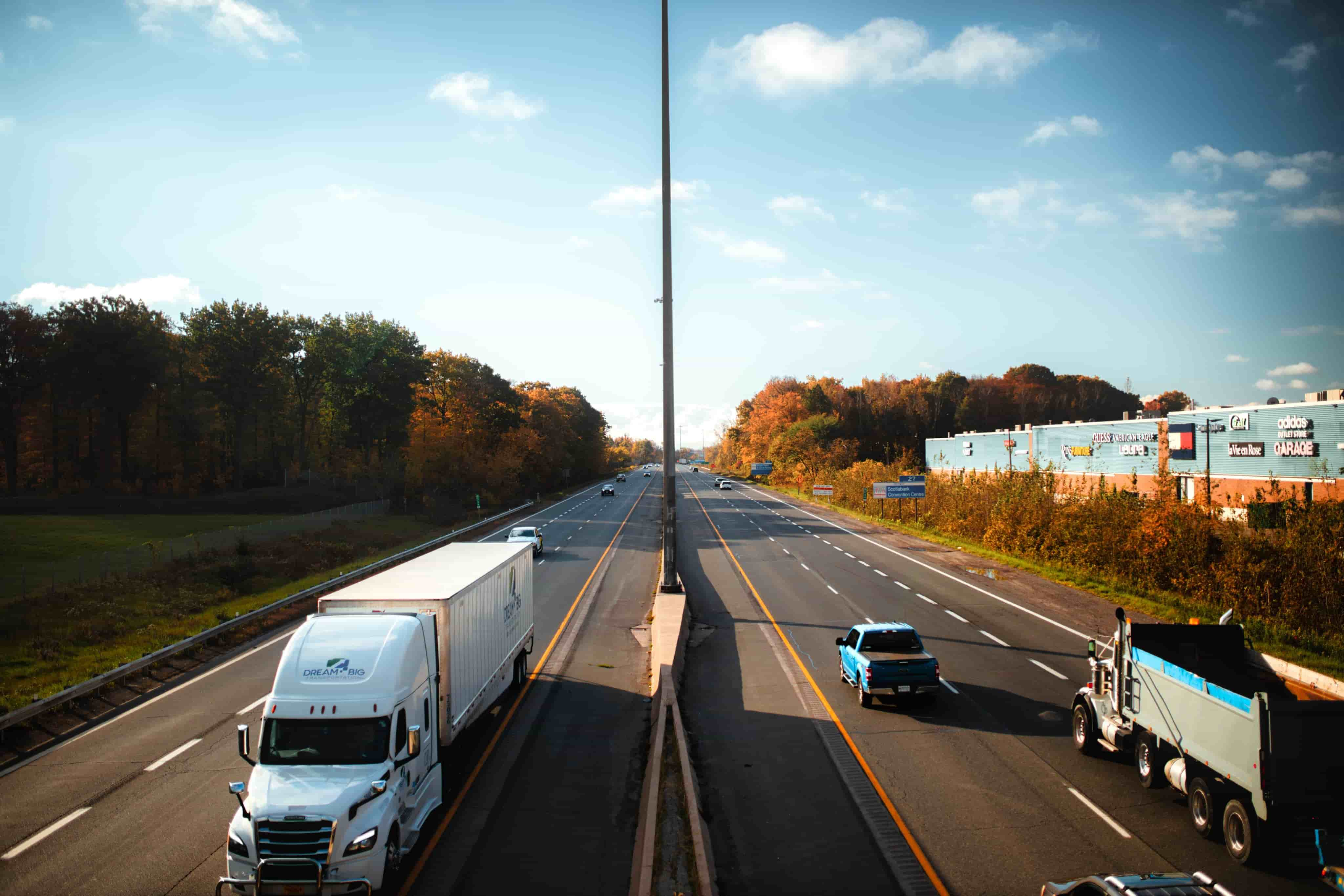
Shipment Status
Stay ahead with up-to-the-minute shipment status updates! Our reliable tracking ensures you're always informed about your parcel's journey. Ideal for businesses and individuals, experience stress-free shipping with our precise and timely updates. Click to track and gain peace of mind with every shipment!
Understanding Shipment Status:
A Comprehensive Guide for Businesses and Consumers
In today’s fast-paced world, where timely delivery is not just a convenience but a necessity, understanding the nuances of ‘Shipment Status’ has become crucial for businesses and consumers.
Section 1: The Basics of Shipment Status
Definition of “Shipment Status”. Shipment status refers to a shipment’s current position and condition in the supply chain process.
This status provides vital information about the shipment’s progress from the point of origin to its destination.
The various stages of shipment status include:
Order Processing: This is the initial stage where the order is being prepared for shipment.
In Transit: The goods are moving towards their destination at this stage.
Out for Delivery: This indicates the shipment is in the final delivery phase.
Delivered: The final stage is where the shipment reaches its destination.
Traditionally, shipment status updates were communicated through phone calls or manual tracking systems. However, with technological advancements, real-time tracking through websites, mobile apps, and automated notifications has become the norm.
We provide competitive freight shipping prices and an all-inclusive, easy-to-use shipping experience for our customers. Exceeding our customers’ expectations results in thousands of satisfied customer reviews and repeat business. We believe in the power of our customer relationships. Check out FreightCenter reviews from real customers, and learn what they have to say about their freight shipping experience!
Awards and Endorsements
- 2021, 2017 & 2016 Food Logistics’ Top Green Providers
- 2021 & 2018 Supply & Demand Chain Executives’ Pros to Know: Matthew Brosious
- 2020 & 2019 Top Food Logistics’ 3PL & Cold Storage Provider Award
- 2020 & 2019 Business Observer’s Top 500 Companies on the Gulf Coast
- 2020 & 2017 Food Logistics’ Champions: Rock Stars of the Supply Chain
- 2017 Green Supply Chain Award from Supply & Demand Chain Executive
- 2017 Tampa Bay Business Journal Heroes at Work
- 2016, 2015, & 2012 Food Logistics Top 100 Software and Technology Providers
- 2013 Tampa Bay Business 100 by Tampa Bay Business Journal
- 2013 Top 100 Great Supply Chain Partners by SupplyChainBrain
- 2012 TIA Samaritan Award Honorable Mention
- 2012, 2011 & 2010 TBBJ Fast 50 Recipient
- **Veteran Founded & Owned**

How shipment status information is typically communicated to stakeholders.
Communicating shipment status information to stakeholders is critical to logistics and supply chain management. Stakeholders typically include businesses (manufacturers, suppliers, wholesalers, retailers), logistics service providers, and end customers.
The effectiveness of these communications can significantly impact operational efficiency, customer satisfaction, and business reputation.
Here’s an overview of how shipment status information is typically communicated:
Email Notifications: One of the most common communication methods is email. Stakeholders receive automated emails at various stages of the shipment process, such as when the order is processed, shipped, in transit, and delivered.
These emails often contain a tracking number and a link to check the shipment’s current status.
SMS and Mobile Alerts: With the widespread use of smartphones, SMS and mobile alerts have become a popular way to provide real-time updates. Customers and businesses can receive text messages about fundamental shipment status changes.
Online Tracking Systems: Almost all major logistics companies offer online website tracking systems. By entering a tracking number, stakeholders can view the current status of their shipment.
These systems are often updated in real time and provide detailed information about the shipment’s location and estimated delivery time.
Mobile Applications: Many logistics companies have their mobile applications. These apps provide tracking information and allow users to manage their shipments, schedule deliveries, and interact with customer service.
Customer Service Centers: Customer service centers are vital for those who prefer direct communication. Customers and business partners can call these centers to get shipment updates. Some companies also offer chat support for tracking shipments.
Automated IVR Systems: Interactive Voice Response (IVR) systems are used by some companies to provide shipment updates. Users can call a number, enter their tracking information, and receive an automated update on their shipment status.
EDI Updates: In B2B (Business-to-Business) scenarios, Electronic Data Interchange (EDI) systems communicate shipment status between businesses. This automated system is handy for large-volume transactions and regular shipments.
Dashboard Reporting for Businesses: Businesses often have access to customized dashboards that logistics companies provide. These dashboards offer a comprehensive view of all shipments, including status updates, and are particularly useful for managing multiple shipments simultaneously.
Social Media and Chatbots: Some companies use social media platforms and AI-powered chatbots to provide shipment status updates. Customers can inquire about their shipment status through these platforms for quick and convenient updates.
API Integration: For e-commerce and larger businesses, API (Application Programming Interface) integration allows for the seamless transfer of shipment status information into their systems or websites.
This enables them to provide real-time customer updates directly through their platform.
Each communication method can be tailored to different stakeholders’ specific needs and preferences, ensuring that the correct information is delivered at the right time in the most convenient format.
This multi-channel approach enhances transparency in the supply chain and significantly improves customer experience and satisfaction.
booked
Section 2: The Evolution of Shipment Tracking Technology
The history of shipment tracking is a testament to the remarkable strides made in logistics technology, evolving from rudimentary methods to sophisticated, real-time tracking systems. Understanding this evolution is critical to appreciating the current state of shipment status communication.
Early Days – Manual Tracking: Initially, shipment tracking was a manual process. It involved logbooks and physical checks at each transit point. Communication about shipment status was typically done through phone calls or postal mail, making the process slow and prone to errors.
The Advent of Digital Tracking: The digital revolution brought the first significant change in shipment tracking. Companies started using computer systems to record and track shipments.
This period saw the introduction of barcode systems, which allowed for more efficient monitoring of packages through various stages of the delivery process.
Real-Time Tracking with GPS: The integration of Global Positioning System (GPS) technology was a game-changer. GPS enabled real-time tracking of vehicles and shipments, providing unprecedented visibility into the location of goods in transit.
This technology allowed companies and customers to know exactly where their shipment was at any given moment.
RFID and IoT – The Next Leap: Introducing Radio Frequency Identification (RFID) and the Internet of Things (IoT) further transformed shipment tracking.
RFID tags and IoT sensors provided more detailed shipment data, including their condition, temperature (critical for perishable goods), and exact location within a complex supply chain network.
Advanced Data Analytics and AI: With vast amounts of data from tracking systems accumulated, advanced analytics and artificial intelligence (AI) began to play a role. These technologies enabled predictive analytics, offering insights into potential delays or issues and helping optimize routes and delivery schedules.
Blockchain for Enhanced Security and Transparency: The latest innovation in shipment tracking is the application of blockchain technology.
By creating a decentralized and tamper-proof ledger, blockchain provides unparalleled security and transparency in the tracking process, allowing all parties to view the history and status of a shipment in a trustless environment.
The Future – Autonomous Vehicles and Drones: The shipment tracking industry is poised for further disruption with the advent of autonomous vehicles and drone delivery systems.
These technologies promise to make shipment tracking even more accurate and efficient, potentially reducing delivery times significantly.
Integration of AI-driven Customer Service Tools: AI-driven chatbots and virtual assistants are increasingly integrated into tracking systems, allowing for more interactive and responsive customer service. These tools can provide instant updates, answer queries, and even handle shipment-related complaints or issues.
Mobile Technology and App-Based Tracking: The ubiquity of smartphones has led to the proliferation of mobile apps for shipment tracking. These apps provide convenience and accessibility, allowing users to track their shipments with just a few taps on their phone screens.
Customized and Personalized Tracking Experiences: As technology advances, so does the demand for customized tracking experiences. Businesses can now offer personalized tracking options tailored to individual or business clients’ specific needs and preferences.
In conclusion, the evolution of shipment tracking technology is a story of continuous innovation and improvement. Each advancement has increased efficiency, accuracy, and transparency in communicating and managing shipment status, from manual logs to AI and blockchain.
We can expect even more sophisticated and user-friendly tracking solutions as technology evolves.
Section 3: The Role of Shipment Status in Supply Chain Management
Shipment status plays a pivotal role in the orchestration of supply chain management. Its impact goes beyond mere tracking; it is integral to the optimization and reliability of the entire supply chain.
Enhancing Inventory Management: The accurate and timely knowledge of shipment status allows businesses to manage their inventory more effectively. By knowing precisely when goods will arrive, companies can reduce excess stock and minimize the costs associated with storage.
This just-in-time inventory approach relies heavily on precise shipment status information.
Improving Planning and Forecasting: With real-time shipment status data, businesses can forecast demand more accurately and plan their supply chain activities accordingly. This level of planning can lead to more efficient resource utilization and better alignment of supply with demand.
Reducing Lead Times and Increasing Responsiveness: Knowledge of exact shipment status enables companies to reduce lead times, as they can prepare for receiving and processing goods more efficiently.
This increased responsiveness is particularly crucial in industries where time-sensitive deliveries are critical, such as in pharmaceuticals or perishable goods.
Enhancing Customer Satisfaction: Customers expect timely and accurate information about their orders in today’s market. The ability to provide real-time shipment status updates directly impacts customer satisfaction and loyalty.
It gives customers visibility and control over their orders, a significant value addition in the e-commerce era.
Facilitating Better Supplier and Partner Relationships: Shipment status tracking helps maintain transparency with suppliers and logistics partners. By accessing the same real-time data, all parties involved can coordinate better, resolve issues more efficiently, and build stronger, more reliable relationships.
Risk Management and Mitigation: Real-time tracking of shipment status is crucial for identifying and mitigating risks in the supply chain.
By monitoring shipments continuously, businesses can quickly respond to unforeseen events like delays, damages, or route disruptions, thereby minimizing potential impacts on the supply chain.
Compliance and Documentation: In many industries, particularly those involving international trade, maintaining and providing accurate shipment status is a part of regulatory compliance. Proper tracking ensures that all necessary documentation for customs clearance and other regulatory requirements is handled efficiently.
Cost Optimization: By effectively managing shipment statuses, businesses can optimize their shipping routes and modes of transportation, leading to significant cost savings. Efficient tracking can help identify the most cost-effective options for shipping, including consolidating shipments and optimizing load capacities.
Leveraging Data for Strategic Decisions: The data gathered from shipment tracking systems is a goldmine for strategic decision-making. This data can reveal patterns and insights that help make informed decisions about logistics strategies, supplier choices, market expansions, and customer service improvements.
Sustainability in the Supply Chain: With a growing focus on sustainability, tracking shipment status helps reduce the supply chain’s carbon footprint. Efficient routing, reduced idling times, and optimal loading contribute to more sustainable logistics practices.
In summary, the role of shipment status in supply chain management is multifaceted and critical. It ensures the smooth functioning of logistical operations and contributes significantly to strategic planning, customer satisfaction, cost optimization, and sustainable practices.
As technology continues to advance, the capability to track and leverage shipment status information will only become more integral to successful supply chain management.
Track your shipment status on FreightCenter with ease. Our reliable tracking tool offers real-time updates and detailed insights for all your FreightCenter shipments. Perfect for businesses and individuals seeking efficient, accurate tracking solutions. Stay informed every step of the way with FreightCenter.
Effortlessly monitor your Less-Than-Truckload (LTL) shipments with our LTL Tracking Status tool. Experience real-time updates, detailed shipment tracking, and enhanced visibility for all your LTL needs. Ideal for businesses seeking precise, reliable, and timely information on their freight's journey.
Keep a close eye on your Full Truckload (FTL) shipments with our FTL Tracking Status service. Offering real-time updates and comprehensive tracking details, this tool is perfect for businesses and individuals needing precise, up-to-date information on their large-scale shipments' progress.
Navigate your Partial Truckload (PTL) shipping with ease using our PTL Tracking Status tool. Get accurate, real-time updates and in-depth tracking details for your PTL shipments, ensuring timely and informed logistics management for businesses and individual shippers alike.
Stay informed on the global journey of your shipments with our International Tracking Status tool. Offering detailed, real-time updates for cross-border shipments, it's the ideal solution for businesses and individuals seeking precise tracking information for their international freight.
Efficiently track your air freight shipments with our Air Freight Tracking Status tool. Get real-time updates and detailed information on your cargo's journey through the skies, perfect for businesses and individuals needing fast, reliable insights for their air shipping needs.
Monitor your ocean freight with confidence using our Ocean Freight Tracking Status tool. Experience comprehensive, real-time updates on your shipments' sea journey, ideal for businesses and individuals requiring accurate, up-to-date information for their maritime logistics."
Ensure peace of mind with our Guaranteed Shipment Tracking Status tool, offering precise, real-time updates for your time-sensitive deliveries. Ideal for businesses and individuals who value reliability and punctuality in their shipping needs, ensuring every shipment is tracked to its destination.
Securely confirm your shipments' successful delivery with our Proof of Delivery service. Offering easy access to delivery documentation and signatures, this tool is essential for businesses and individuals who prioritize verification and assurance in their shipping and receiving processes.

 Guaranteed competitive pricing every time you ship.
Guaranteed competitive pricing every time you ship.

Section 5: Challenges and Solutions in Shipment Status Tracking
While shipment status tracking is crucial for supply chain management and customer satisfaction, it comes with challenges. Addressing these effectively is key to maintaining a smooth and reliable tracking system.
Data Accuracy and Timeliness: One major challenge is ensuring the accuracy and timeliness of shipment status data. Delays or errors in data entry can lead to incorrect status updates, causing confusion and dissatisfaction.
Solution: Implementing automated tracking systems like RFID and GPS can reduce human error. Additionally, integrating AI can help in real-time data analysis and prompt updating of shipment status.
Technical Issues and System Downtime: Technical glitches or system downtime can disrupt the tracking process, making it challenging to access shipment status.
Solution: Regular system maintenance and having a robust IT support team are essential. Cloud-based systems can offer more reliability with redundant data backup and smoother recovery options.
Handling Large Volumes of Shipments: As businesses grow, tracking an increasing number of shipments becomes challenging. Solution: Scalable tracking solutions are crucial.
Cloud-based platforms and sophisticated logistics software can handle large data volumes efficiently and provide scalable solutions as business needs grow.
Integration with Other Systems: Ensuring seamless integration of the shipment tracking system with other business systems (like inventory, CRM, etc.) can be complex.
Solution: Using APIs for integration can allow different systems to communicate effectively. Choosing software and tools that are compatible with existing systems is also essential.
Customer Service Challenges: Teams must respond quickly and effectively when shipment issues arise.
Solution: Training customer service teams to handle queries related to shipment tracking and equipping them with real-time information can improve response times and effectiveness. Implementing AI chatbots can also help in managing high volumes of customer queries.
Global Tracking Challenges: Tracking shipments across international borders can be complicated due to different regulations and systems.
Solution: Using international tracking systems and ensuring compliance with global shipping regulations is essential. Partnerships with local carriers and logistics providers can also facilitate smoother international tracking.
Security and Privacy Concerns: Protecting the data involved in shipment tracking, especially customer information, is critical.
Solution: Implementing strong cybersecurity measures and adhering to data protection regulations is necessary. Regular security audits and compliance checks can help maintain high-security standards.
Environmental Factors and Unforeseen Delays: Weather conditions, natural disasters, and other unforeseen events can impact shipment status.
Solution: Developing contingency plans and alternative routes for such scenarios is essential. Real-time weather and traffic data can be integrated into the tracking system for better predictive planning.
Cost Constraints: Small and medium-sized businesses might find advanced tracking solutions financially burdensome.
Solution: Leveraging cost-effective cloud-based tracking solutions and considering subscription-based models can reduce financial burdens. Additionally, investing in technology should be viewed as a long-term investment for business growth.
Adapting to New Technologies: Keeping up with rapidly evolving technology in shipment tracking can be challenging.
Solution: Continuous learning and adaptation are essential. Regular training for staff and staying informed about the latest technological advancements can help businesses adapt more efficiently.
In summary, while there are significant challenges in shipment status tracking, there are also viable solutions.
By addressing these challenges proactively, businesses can maintain an efficient, reliable, and customer-friendly tracking system, which is essential in today’s fast-paced and technology-driven marketplace.
3 Primary Stages of the Shipment Status
Load Tendered to Carrier
This step in logistics involves the shipper formally handing over the shipment to the carrier, who then becomes responsible for safe and timely delivery, marking the start of transportation.
Shipment In Process
Shipment In Process denotes a crucial logistics phase, signifying active handling and transit towards its destination. It involves transportation, routing, and potentially transshipment, under carrier control. Real-time tracking is vital for monitoring progress and estimated arrival time, essential for supply chain efficiency.
Shipment Delivered/Exception
"Shipment Delivered" confirms goods reached the recipient. "Exception" notes unexpected events hindering delivery, requiring detailed communication for resolution, crucial for tracking and managing deviations.
